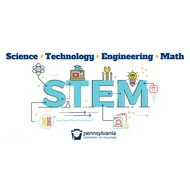(View Complete Item Description)
This is a really fun and informative lesson that I do with my high school Programming/technology class to break up the monotony of beginner programming. However; this lesson can be used and applied in essentially any class and for many purposes, and to address many areas. One of the other really nice things about this lesson is that it can be extended to hit many points including physics, math, and advanced engineering.
Throughout the building period, I would present teams with a challenge (puzzle, build, etc…) and the first team to complete it would get a prize. It could be more modification time, extra materials, etc…)
The materials (including hot glue guns) can be purchased at Wal Mart or a similar store for around $20-25, if ordering through your district isn’t an option. With those purchases, it gives you a lot more materials than needed which can be used for additional similar projects.
Material Type:
Activity/Lab
Author:
Timothy Barnes




















